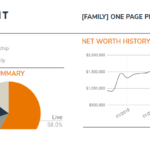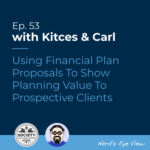
Enjoy the current installment of “Weekend Reading for Financial Planners” – this week’s edition kicks off with a breakdown of how the Build Back Better Act is likely to change now that it has passed the House but is just now heading to the Senate for a fresh round of debates – including, most notably for financial advisors and their clients, the potential increase in the SALT deduction cap that was included at the last minute in the House’s version of the bill but faces resistance from the progressive wing of Democrats in the Senate.
Also in industry news this week:
- IRS data showing that the amount of estate tax paid by Americans fell by over 50% from 2018 to 2020, the result of a combination of higher estate tax exemptions after the Tax Cuts and Jobs Act… and higher adoption of more sophisticated estate planning methods (e.g., GRATs and FLPs) by wealthy individuals
- A new report by Cerulli showing how investors, despite being increasingly aware of the fees they pay for financial advice, are also becoming more willing to pay for the advice itself, creating opportunities for advisors with non-AUM fee-for-service models
From there, we also have several articles on digital marketing, including:
- The highest-performing types of financial advisor blog posts, including both topics that demonstrate the advisor’s expertise, and those that showcase their personality and client experience
- How to create email subject lines that lead to higher opening and click-through rates with prospects
- How video marketing campaigns outperform other media – as long as they are hosted natively on the advisor’s site (not just via YouTube or social media) and promoted effectively
We also have a number of articles on changes to the college financial aid process and student loan planning:
- Upcoming changes to the Free Application For Federal Student Aid (FAFSA) and the formula used to determine financial need
- How distributions from grandparent-owned 529 accounts will no longer negatively affect a student’s eligibility for financial aid under new FAFSA changes in the coming years
- Why the biggest student loan burdens are shifting from undergraduates to graduate students, and the challenge of ‘elite’ Master’s degrees that have a high cost but don’t lead to (materially) higher incomes
We wrap up with three final articles, all about financial advisory practice management and conveying our value as financial advicers:
- Why ‘unbundling’ financial planning services can create value for both advisors and clients
- How clients determine the value they get from a financial planning engagement, and the way advisors can (re-)price their services accordingly
- A consumer survey highlighting that consumers may get initial introductions to advisors through friends-and-family referrals, but increasingly are looking to the advisor’s presentation of services, brand, cost, and communication style, to determine whether to hire (and stick with) the advisor
Enjoy the ‘light’ reading!










